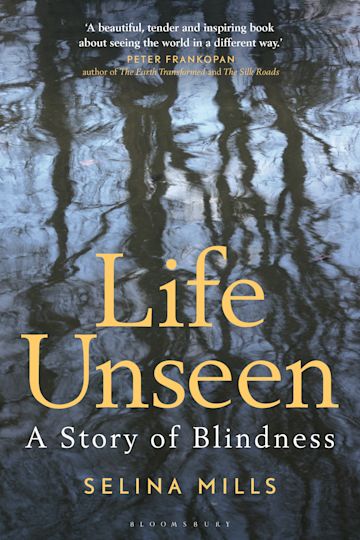Arpan K. Banerjee
Solihull, United Kingdom

In her new book, Selina Mills, an award-winning journalist who is legally blind, takes us on a journey through the cultural history of visual impairment and blindness. It is both informative and empowering, weaving together research and the author’s personal experience.
Throughout time, loss of sight has been associated with supernatural gifts or as a condition to be pitied. Herodotus and Aristotle believed that blindness was connected to talent. The writings of the blind poet Homer confirmed their suppositions. John Milton, Jorge Louis Borges, Aldous Huxley, Ved Mehta, and Jose Saramago would later join this canon of talented sight impaired writers. The mythology of heightened senses and special talents being associated with blindness continued in the twentieth century with T.S. Eliot’s poem “The Waste Land”, in which the character Tiresias is empowered with visionary status, despite his blindness.
In the play Oedipus Rex by Sophocles, Oedipus gouges out his eye as a self-punishment for his actions. Ancient playwrights such as Euripides used blindness in plots to frighten audiences. Blindness was a subject of interest to physicians in the Roman era, with Galen writing prolifically about the eye and its disorders.
Christianity also has stories of many blind and blinded saints, perhaps the most famous being St. Lucy, the patron saint of light and eyesight. In the Middle Ages, blindness was linked to sin and punishment, causing blind people to be stigmatized, an idea that thankfully has changed over time.
The chapter on cures for blindness touches on the historical ideas of Galen, Isaac Newton, John Locke, and William Cheselden. Cheselden, a surgeon at St. Thomas’s Hospital, London, was famed for his prowess at removing kidney stones and gallstones. He also attempted to remove a cataract as early as 1728. It is not clear if he was successful. Quacks such as Chevalier John Taylor operated on Handel and Bach and made their eyesight worse. Proposed cures for loss of sight have always been popular, but were seldom successful until modern times.
Also included in the book is the story of Maria Theresa Von Paradis, who became blind at the age of two but was a brilliant pianist, admired by Haydn and Mozart. Franz Mesmer’s role in treating her makes for interesting reading.
The book covers the contributions of the famous blind writer Helen Keller, the contributions of Louis Braille, and other figures who contributed to the education of blind people from the nineteenth century onward, when a gradually more compassionate attitude began to take hold in society.
The book concludes with the modern era and the plethora of aids and technology now available. The author reminds us that each person has different abilities and needs, and that the sight impaired are not a homogenous group.
Selina Mills combines history with personal experience in Life Unseen and debunks stereotypical and patronizing attitudes towards the blind. It is an original, well-researched work that provides superb insight into the world of people with visual impairment.
Life Unseen: A Story of Blindness
Selina Mills, Bloomsbury Academic Publishing, 2023
ISBN 9781848856905
DR. ARPAN K. BANERJEE qualified in medicine at St Thomas’s Hospital Medical School. London. He was a consultant radiologist in Birmingham 1995–2019. He was President of the radiology section of the RSM 2005–2007 and on the scientific committee of the Royal College of Radiologists 2012–2016. He was Chairman of the British Society for the History of Radiology 2012–2017. He is Chairman of ISHRAD. He is author/co-author of papers on a variety of clinical, radiological, and medical historical topics and seven books, including Classic Papers in Modern Diagnostic Radiology (2005) and The History of Radiology (OUP 2013).

Leave a Reply